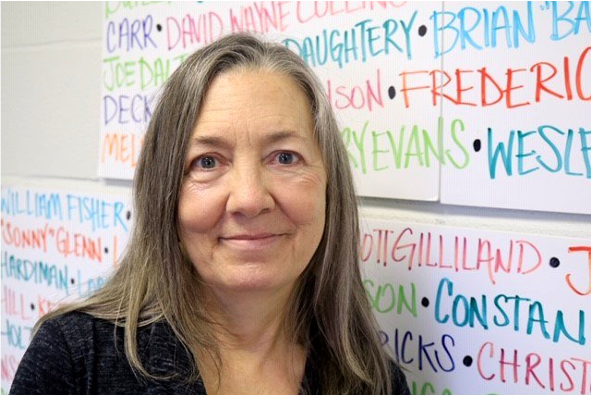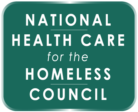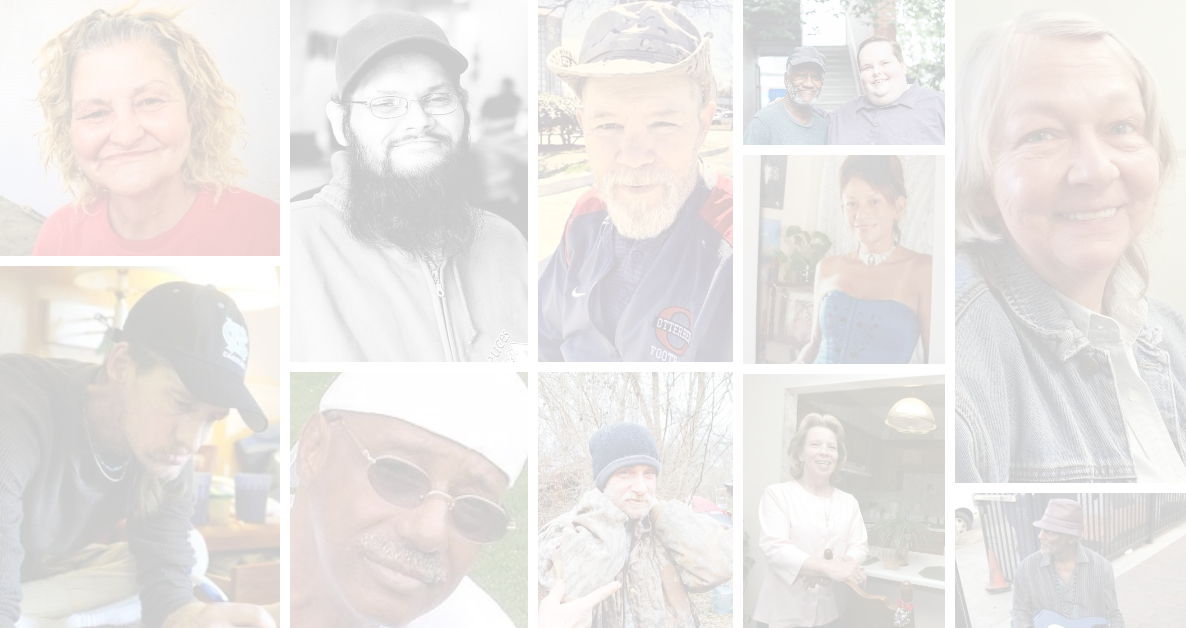More links related to these stories:


Larry Saylor
– As told by Susan Adcock
A kind man with a troubled past, Larry spent years cycling through the criminal justice system and was in and out of hospitals that felt like jail to him.
Larry battled congestive heart failure and substance use. He passed away on June 12, 2019, at age 54, and his ashes were laid to rest on a Florida beach.
Larry’s friend, Susan Adcock, West Side Outreach Worker and Housing Navigator at Open Table Nashville, shares his story.
Always Lending a Hand
I knew [Larry] for a little over a year. He was really funny. He was sort of a straight man. He always had a really dry, hilarious thing to say. He would leave me funny voice mails.
It was 16 years [on the streets] with jail sprinkled in. He had long ago been married and divorced. I don’t think he ever had his own place since he was divorced—common with men his age. Especially when you have a record, you can’t get an apartment or a job.
He had been turned down for housing multiple times and so just stayed out. At one point [his] daughter was [in his life]. He tried to establish a relationship with her, but she wasn’t feeling it. He didn’t have anybody in his life for the past 15 years anyway.
He basically lived all around town over the years, but he ended up living at Centennial Park in Nashville for the last part. He really did take care of a lot of people around the park that were also homeless. He was a guy more concerned for other people than he was for himself. He always could find that person that was struggling more than him and help them with whatever they needed, but he didn’t really feel that about himself.
There was a guy there that had a big, huge dog. The guy drank so much that the dog would get loose, and I would always find Larry in the park with the dog. He would take care of the dog until its owner could take care of him himself. If I wanted to know anything that had gone on over there, I could ask him, and he knew the answer.
When the Hospital Feels More Like Jail
He’s one of those guys that started drinking when he was a kid. His grandpa used to take him to the bar and get him drunk and think it was funny. He grew up with alcohol and drugs, and he started going to jail really early. He got in trouble when he was a teenager—always from drinking. He went to juvenile detention, and then he went to jail, and then he went to prison. That just became a normal part of his life.
He had a lot of trauma around the fact that he’d been in prison for over half of his life. When he would be in the hospital, it felt like jail to him. He would often get to feeling a little bit better and just leave. I’m sure alcohol had to do with that, but for the most part, he felt trapped when he was in the hospital, just like when he was in jail.
He repeatedly left the hospital, and a lot of the doctors were done with him. They knew his history of leaving and so his care became erratic. The doctors would just throw up their hands.
Toward the end, they did call me a couple of different times and let me know that he had gotten worse and that, eventually, they would not be able to save him.
In their own words:
Listen to Larry’s wish for housing.
Discharged to the Street
He spent Memorial Day weekend on my couch. The hospital threw him out one night when he could no longer really walk. He was very ill. They called me and told me that they’d discharged him, but he never made it back to the park. At midnight I was scouring all around the hospital grounds looking for him. I found him on their property in the fetal position in a set of paper scrubs. I put him in my car and drove to my house.
He kept saying, “Where are we going?” I said, “I’m taking you to my house.” He said, “Finally! I’ve been working toward that for years.”
I thought that he might die at my house that weekend. I kept saying to him, “Listen, Larry, when you get ready to go to the hospital, you tell me. If you don’t go to the hospital, you might die here.” He said, “I’ll tell you when I’m ready.” I really thought that he would, but about 48 hours in he said, “Call an ambulance.”
They brought him back to life one more time.
Housing That Came Too Late
Six months before he died, maybe even a little bit longer than that, he was in and out of the hospital every couple of weeks. He had, I think, nine stents in his heart, and they couldn’t do open heart surgery if they even wanted to because it was such a critical time. They didn’t think he would live through it.
He also couldn’t stop drinking. I always felt like if he had an apartment—and he said the same thing, too—he could concentrate on stopping drinking.


He was willing to do that, but he just couldn’t do it out in the street. It cycles like that with people. I can almost predict now, sadly, about how much longer they’ll live if they have that history. If they start going to the hospital with that regularity, it’s pretty easy to see the future.
The four walls of a hospital felt like jail to Larry, a man with a long history of incarceration who was simultaneously experiencing homelessness and heart disease. Homelessness and incarceration are mutual risk factors for each other, and individuals without stable housing have a greater risk for incarceration than the general population.
Studies show rates of homelessness among people exiting correctional institutions range anywhere from 10-25 percent. Furthermore, 25-50 percent of people experiencing homelessness have a history of incarceration.
Justice-involved populations have complex health needs. According to the Bureau of Justice Statistics, approximately 40 percent of individuals in a jail or prison between 2011 and 2012 reported currently having a chronic health condition.
The same study found that those in prisons or jails were more likely to have had a chronic health condition or an infectious disease when compared to the general population. Furthermore, after leaving jail, they often struggle to maintain the same level of coordination of health care they received within the criminal justice system, causing treatment to be interrupted and the health of justice-involved populations to be neglected.
In addition to struggles maintaining health care, justice-involved populations also encounter challenges securing housing and employment due to their history with the criminal justice system. People experiencing homelessness are more likely to be cited or arrested, thus perpetrating the cycle of homelessness and incarceration.
In their own words:
Listen to what Larry Remembers as the best time of his life
Laid to Rest on the Beach
Once a doctor asked me to give him the “mom” speech. I went in his hospital room and said, “Larry, do you want to be buried or cremated?” He said, “Gosh, Ms. Susan, you really get straight to the point, don’t you?” I said, “I need to know.” He said he wanted to be cremated, and I asked him where he wanted his ashes put. He said, “You decide.” I was about to go on vacation to Florida, and I said, “If you let me decide, you’re gonna end up in a beach somewhere.” He said, “That sounds good to me.”
There was an event where they pulled out all the stops to save his life again. The doctor called me and said, “I’m not going to be able to do this next time. Next time is gonna be the one.” And he was right. It was just a couple of weeks that he went back to the hospital and died. We had a little funeral service for him and his friends in the park.
I went to Florida and I took him with me. [I] put his ashes at the beach and struggled a little bit with exactly where, and then I decided that it was the perfect place.
The Best Time of His life
I asked him one time what the favorite time of his life was—what do you remember as the best moment? He said he had a little girl when he was 16 or 17 years old, and she was his favorite thing in his entire life. He lost touch with her, and they’d become estranged. He didn’t have any current memories of her other than when she was born.
He remembered that being the best time.
What can you do to stop homeless deaths?
Join us in working toward a world in which no
life is lived or lost in homelessness.


